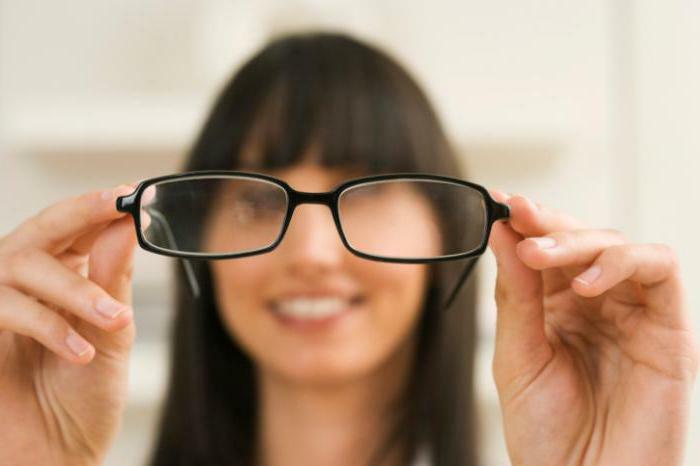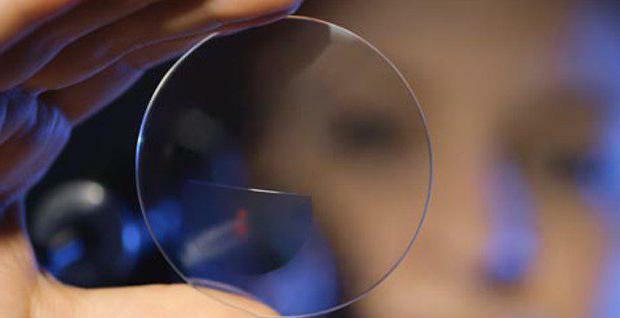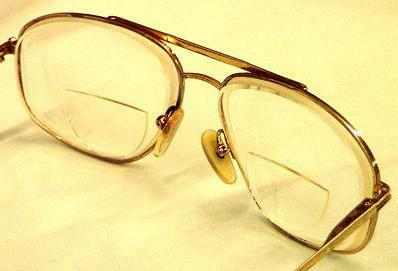Bifocal lenses: description, types, dignities
With short-sightedness, people do not see well for long distances, but with this they can well consider objects that are directly in front of them. With farsightedness, the opposite is true. In order to help in this situation, glasses with diopters are needed. It would seem that the two problems mentioned are mutually exclusive, but this is not entirely true. Quite often, people over 40 years of age observe a state when it is difficult for them to focus on objects located both far and near. And then special lenses will help.
Bifocal glasses
Time spares no one, and after a certain age the human body shows some signs of aging. This is particularly noticeable in the case of the visual apparatus, which in most people is weakening by the age of 40, and in the future the situation only worsens.

Age presbyopia arises from the loss of the lens by the former elasticity, resulting in the development of hyperopia. In combination with myopia, which is more or less characteristic of a large number of people, it creates an acute need for the use of special devices.
Normal glasses with diopters can help, but for different purposes you will have to use a different type of lens. This is not always convenient, but for some, it also spills into significant waste. Fortunately, science found a way out of this situation, combining what was meant for absolutely opposite purposes. As a result, more than 200 years ago, bifocal lenses were invented. What are they unique?

The invention and improvement of
The first mention of bifocals for eyeglasses dates back to 1784 and is attributed to Benjamin Franklin, a famous American politician and no less famous inventor.
In his letter to a friend, he reported that he took a pair of lenses to compensate for myopia and hyperopia, cut each into two parts, connected and placed in a frame. As a result, it turned out that at the bottom were halves, through which it was convenient to look directly in front of him, and at the top - fragments for viewing objects at greater distances. The sharp boundary between the different parts helped to understand where to focus the view better. In a word, these were similar lenses. Bifocal glasses at once became popular among patients, and not the least role in this played the progress of their doctors.

Due to the high demand, it became necessary to improve this invention. Over time, there were instances that did not consist of halves, but looked as if one lens was inside the other. The location of the optical center of the additional glass corresponded to the direction of sight when, for example, reading or writing. At the same time, the transition boundary remained clear.
Efficiency
For two hundred years, bifocal lenses remained the only means that allowed not to carry two pairs of glasses with you and it is easy to see both at close and far distances. The effect is always visible right away - a person instantly acquires a clear vision and can forget about his problems. Some more time is needed to get used to new points, but this period rarely lasts long. They are well proven as a proven tool, although sometimes these lenses can be too cumbersome and ugly. For many people this is a serious reason to refuse to use such glasses.
With the development of technology, it became possible to produce more advanced glass including with an imperceptible transition, which made bifocal lenses morally obsolete. Nevertheless, they did not disappear at all.

Contact lenses
Many people do not like glasses. Someone is just uncomfortable, others remember childhood, when they were mocked, others are scattered and constantly lose things. In a word, glasses that would have been unnoticeable, but if they worked as well as usual, instantly became a hit. So there were contact lenses, working on exactly the same principle, but not in front of the eyes, but directly on their surface. Zones of different refraction are in approximately the same area - opposite the pupil. Depending on whether a person looks at a nearby object or distant, such an image will be projected more clearly onto the retina. Bifocal contact lenses, of course, have a very soft transition between these zones. Due to this, a natural vision of good clarity is achieved.

Multifocal lenses
Bifocals gradually go down in history, as they are replaced by a relatively new invention. In addition to distant and close distances for which there are zones, there is also a so-called transitional one. It also plays a significant role, so it is not surprising that this factor began to be taken into account when correcting the vision.
Such lenses can also be called progressive, and they have different structures. Depending on the vision, aspherical, concentric or circular design is selected. This is decided by the doctor in the diagnosis, so do not try to pick up the glasses yourself. Here, not only design, but also material matters, especially if it's not about glasses, but about contact lenses.
Price issue
The solution to the problem of presbyopia is available for almost any wallet. Less perfect bifocal lenses, the price of which varies depending on what is being said: about eyeglasses or contact products, stand in the range from 1 to 3.5 thousand rubles. Somewhere you can order them for a smaller amount, but good, high-quality optics are always cheap, and you do not need to save on health.
Progressive lenses will cost more - from 4 to about 13 thousand rubles, depending on the country of manufacture, material, design, etc.
Finally, there is an opportunity to get rid of this problem once and for all - the operation. To forget about bifocal contact lenses and other devices, you can simply place a new lens in the eye. This operation will cost about 160 thousand. Whether it is worth it, it is difficult to say, although nothing, of course, will replace the natural sight.
